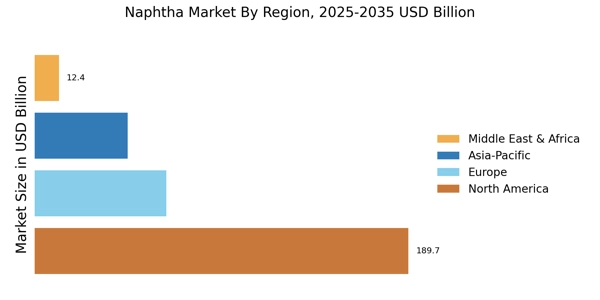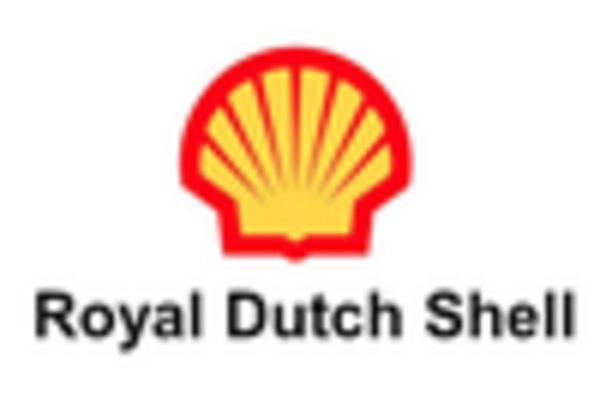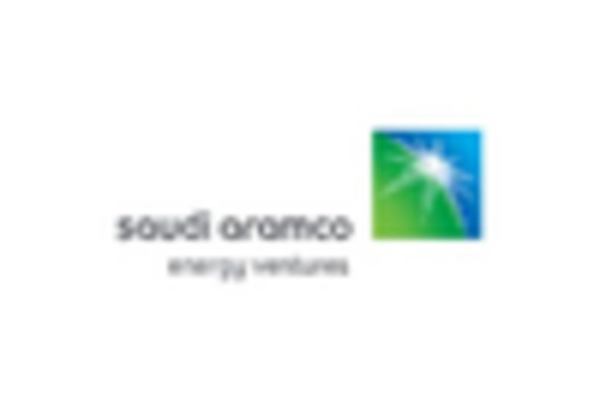Rising Demand for Energy
The Naphtha Market is experiencing a notable increase in demand for energy, driven by the growing industrial sector and urbanization trends. As economies expand, the need for energy sources, including naphtha, is projected to rise. In 2025, the demand for naphtha is expected to reach approximately 500 million metric tons, reflecting a compound annual growth rate of around 3.5%. This surge is largely attributed to the increasing consumption of naphtha in petrochemical production, particularly in the manufacturing of plastics and synthetic fibers. Furthermore, the transition towards cleaner energy sources may also bolster naphtha's role as a feedstock in various applications, thereby enhancing its significance in the energy landscape.
Growth in Automotive Sector
The growth in the automotive sector is a pivotal driver for the Naphtha Market. As vehicle production ramps up, the demand for naphtha as a key ingredient in gasoline formulations is expected to rise. In 2025, the automotive industry is projected to consume approximately 30% of the total naphtha production, reflecting a robust recovery in vehicle sales and manufacturing. Additionally, the shift towards more fuel-efficient and cleaner vehicles may further enhance the demand for high-quality naphtha. This trend indicates that the Naphtha Market is likely to play a vital role in supporting the automotive sector's transition towards sustainability while meeting the needs of consumers.
Emerging Markets and Economic Growth
Emerging markets are becoming increasingly influential in the Naphtha Market, driven by rapid economic growth and urbanization. Countries in Asia and Africa are witnessing a surge in industrial activities, leading to heightened demand for naphtha in various applications, including petrochemicals and fuels. In 2025, it is estimated that emerging markets will account for over 40% of global naphtha consumption, reflecting their growing industrial base. This trend suggests that the Naphtha Market must adapt to the unique needs of these regions, potentially leading to new opportunities for investment and development. As these markets continue to evolve, they are likely to shape the future trajectory of naphtha demand.
Technological Advancements in Refining
Technological advancements in refining processes are playing a crucial role in shaping the Naphtha Market. Innovations such as hydrocracking and catalytic reforming are enhancing the efficiency of naphtha production, allowing refiners to maximize output while minimizing costs. In 2025, it is estimated that the implementation of these advanced technologies could increase naphtha yields by up to 15%. This improvement not only supports the growing demand for naphtha but also aligns with the industry's efforts to optimize resource utilization. As refiners adopt these technologies, the Naphtha Market is likely to witness a shift towards higher quality products, catering to the evolving needs of downstream consumers.
Regulatory Changes and Environmental Policies
Regulatory changes and environmental policies are significantly influencing the Naphtha Market. Governments are increasingly implementing stringent regulations aimed at reducing emissions and promoting cleaner fuels. In 2025, it is anticipated that new policies will encourage the use of naphtha as a cleaner alternative to heavier fuels, particularly in transportation and industrial applications. This shift is expected to drive demand for naphtha, as industries seek to comply with environmental standards. Moreover, the Naphtha Market may benefit from incentives for adopting cleaner technologies, further enhancing its appeal as a sustainable energy source. The interplay between regulation and market dynamics is likely to shape the future landscape of naphtha consumption.


















Leave a Comment